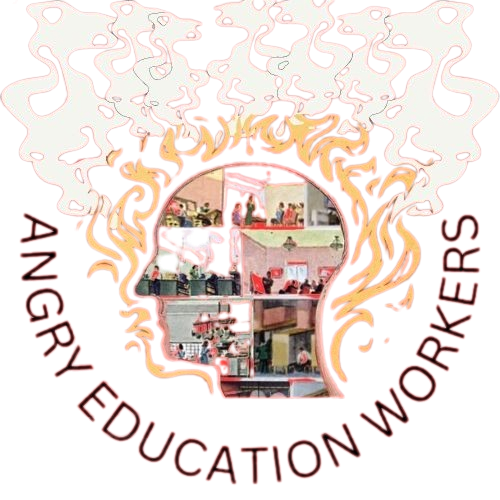The Working Class is (Still) in Danger!
With the 2024 US presidential election drawing closer, the right is once again ramping up its saber-rattling about civil war. While some argue that the threat of civil war is overblown, my fellow worker-organizers in education take the possibility very seriously.
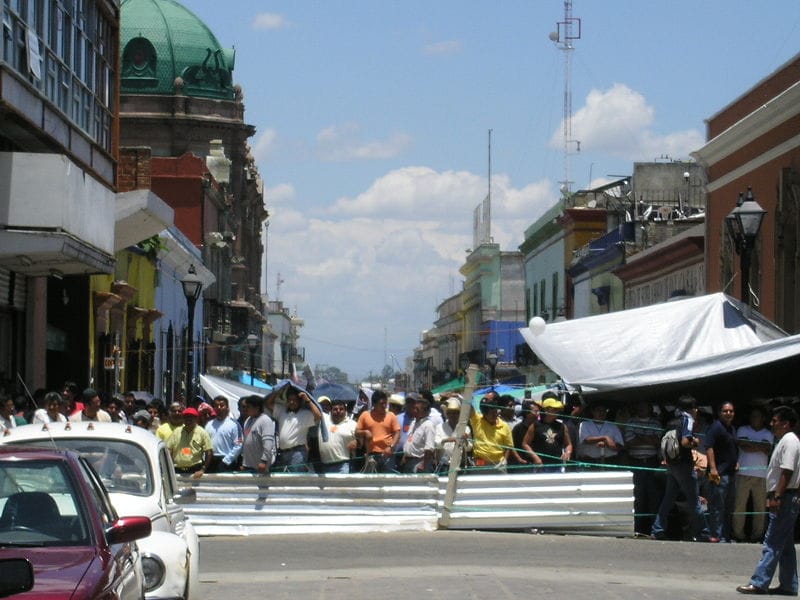
With the 2024 US presidential election drawing closer, the right is once again ramping up its saber-rattling about civil war. While some argue that the threat of civil war is overblown, my fellow worker-organizers in education take the possibility very seriously. Every so often, our discussions turn towards how to respond to such scenarios. This essay—a revisiting of one I wrote one year ago—is an attempt to clarify, elaborate on, and spread the conversation beyond my immediate circle of comrades.
I strongly encourage you to comment with your reactions to this piece. Whatever happens this November, we need to keep having these conversations about how we can present an organized front against fascist violence and state repression. I hope my words here can further open dialogue about this topic.
Shout out to the AngryWorkers political collective in the UK for helping inspire this essay by generously allowing me to adapt an older text of theirs.
The Working Class is in Danger!
The rapid rise of open, violent right-wing extremism over the last twenty years poses one of the most serious dangers the working class must confront as we reorganize to overthrow capitalism. For those of us working in education dealing with the menace of school shootings and facing mob attacks just for teaching the truth, that should be relatively obvious. There has already one coup attempt: January 6, 2021. ‘Civil war’ seems to be back on many people’s lips these days, now that another election year has forced us out of our usual historical amnesia. Most whisper it with dread, while others recklessly seek to invoke such a catastrophic event, one that will open a Pandora’s Box of violence no one can slam shut. Our situation is dire. It is nothing short of an emergency. There has been—and will be—an increase in violent physical attacks on sections of the working class.
Drag Queen Story Hours and Brunches are fixed in the crosshairs, too. Politicians and business owners are exploiting homophobic societal attitudes. The increased prominence and activism of transgender folks can be silenced this way. Florida’s Ron DeSantis threw down the gauntlet with bills that banned teaching or discussing sexuality in classrooms.
Their crusade has manifested in the constantly rising tide of school shootings.
Masses of immigrants from Haiti, Honduras, El Salvador, Mexico, and beyond are still being held in concentration camps near the borders. Deportations continue unabated. Their positions are among the most vulnerable.
Add climate change to the mix and you have an accumulation of catastrophe.
Everything possible must be done to defend people from these threats to their existence. We must seek the maximum possible unity of working people in the face of both the right-wing militias and the state forces. Only revolutionary struggle by and for ourselves as regular people can save us.
In fact, when we look to history, we see that almost every revolutionary epoch occurred simultaneously with coups, civil wars, world wars, and other times of social conflict and collapse. Maybe the 2024 US presidential election goes off without a hitch. Maybe Trump dies or is disqualified from running. Maybe Trump and his ilk kick up a stir but nothing else if he loses. But what about 2028? Or 2032 and beyond?
Whatever happens in November, we have to think strategically about how to respond to these crises before they happen. Otherwise, we will be caught unprepared in a whirlwind of forces far beyond our—or anyone’s—control.
It’s only necessary to look at recent history in Syria to understand why. There was a mass mobilization of the working class. They acted against the corruption of the elite, against the lack of democracy, against poverty and unemployment. However, when those protests came under armed attack by the state’s thugs, the protest movement was not prepared. It couldn’t control the armed fight back, organizationally or politically. The people who were ready to exploit the gun battles were gangsters, sectarian religious groups, foreign states, and above all: the Syrian state itself.
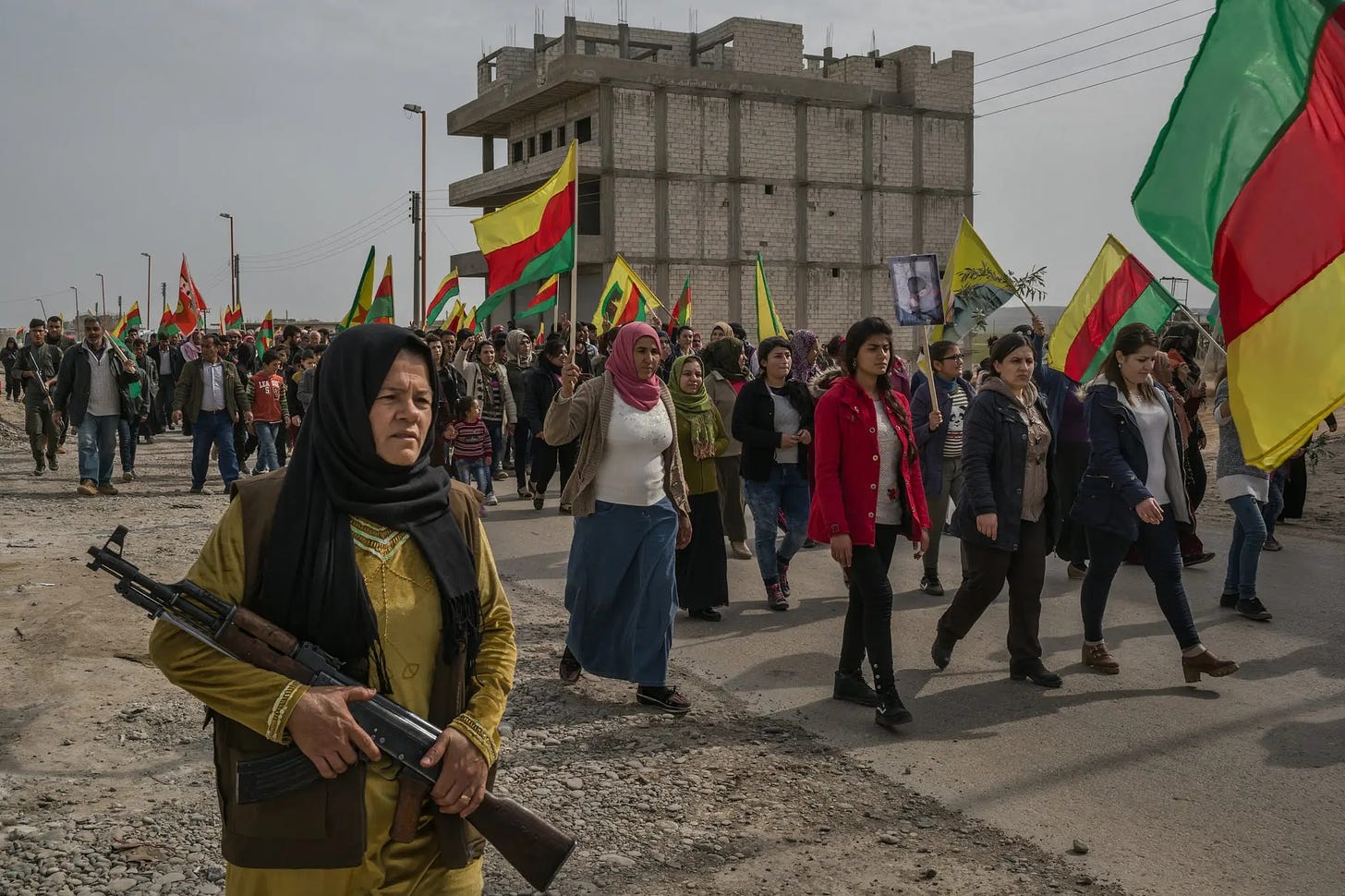
In these circumstances all avenues for the working class to pursue its own discussions, its own initiatives, were shut down. The man with the gun now ruled. And no revolutionary working-class movement yet existed, outside of Rojava in northern Syria. Such a movement cannot be built overnight. Hundreds of thousands of dead and displaced working class people and the stabilization of capitalism were the only outcomes.
Take it further back, in Sierra Leone during the 1990s. Thousands of diamond miners organized with the revolutionary, rank-and-file led union the Industrial Workers of the World (IWW). But a bloody coup dashed their organizing efforts to pieces. All contact was lost with the lead organizer—Bright Chikezi—for years. How can we prevent our current labor upsurge here from being violently scattered to the wind if shit goes sideways in November?
To take just one particularly explosive example, look to the Washington D.C. Area (locally known as the DMV). The way that the power of the federal government is woven into the fabric of the entire region is unique. But otherwise, the situation of countless urban areas in the United States will sound eerily familiar to that of the residents of the District laid out in the next few paragraphs. I encourage you to draw comparisons between where you live and where I am in the DMV in the comments.
I predict it will be a site of intense, likely armed, struggle between political factions. Trump’s coup attempt happened right in D.C. At the time, the entire population of the city was paralyzed. No mass response came even close to materializing. This was mere months after the masses of the DMV shook the gates of the White House during the George Floyd Uprising.
There are 35+ separate law enforcement agencies operating inside the District. In Maryland, ten more police agencies operate on the state level alone. Virginia has sixteen. That doesn’t include all the county and municipal level cops throughout the region. Or the National Guard. Or the thousands of troops garrisoned on bases dispersed around the region. Bolling Air Force Base, for example, which sits right next to some of the poorest neighborhoods in the city. We are confronted with an astonishing array of state forces.
For those of us inside the District, we often forget that we are surrounded by out-of-uniform fascists, too. Virginia is right across the river with its mobs of parents attacking school board meetings and confederate flags hanging everywhere. And of course, remember there are lots of vulnerable, marginalized people throughout the state, too.
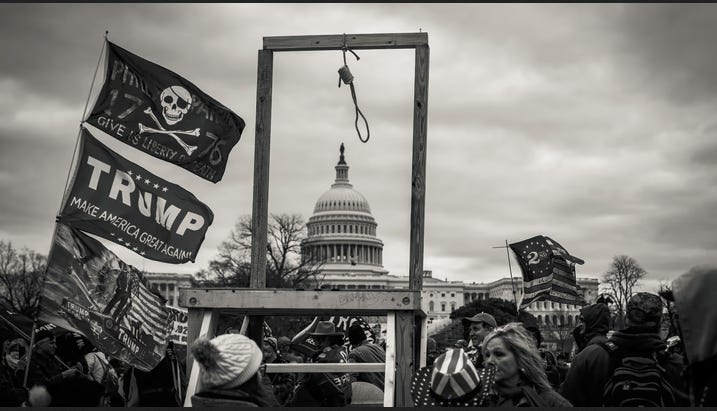
Meanwhile, in far West and East Maryland, white supremacist ideology is pervasive, and the Klan is active. The counties of the Eastern Shore of Maryland were the last places in the state to formally desegregate. Many of the Proud Boys and other fascist gang members that have harassed Drag Queen Story Hours and (unsuccessfully) tried to take the streets of the District are from Maryland. In a situation where a coup, civil war, revolution, or all three break out, we will have to contend with a whole constellation of enemies who are armed and dangerous. We’ll have to take advantage of every division between them that we can find. Otherwise, any revolutionary movement in the region will be smothered before it can even start moving.
Now in the broader US, the benefits to the ruling class from stoking their ‘culture wars’ are all too clear. Teachers and other education workers are often prime targets in civil war and coup scenarios. Recent ‘anti-CRT’ laws have passed in dozens of states. Deployments of hostile mobs of middle-class white people at school board meetings only erode our safety even more. Teachers, for example, were already twice as likely to get fired compared to other workers even before all this.1
Fascists would ramp all this violence up to eleven during a civil war scenario. During the Salvadoran Civil War in the 1980s, teachers were slaughtered in the thousands by the dictatorship and the Contras.2 Not only because they were assumed to sympathize with the left, but because they attempted to shelter community members from the intense violence surrounding all of them.
The militias and mobs are useful for a US government that has drifted so far to the right since the Nixon presidency and the advent of the “Southern” Strategy. White supremacists and other fascists have been successfully infiltrating the army and police for decades.3 They have the backing of the mainstream Republican Party apparatus. This isn’t exactly unique in US history, but the scale is unprecedented. It’s a ready made army.
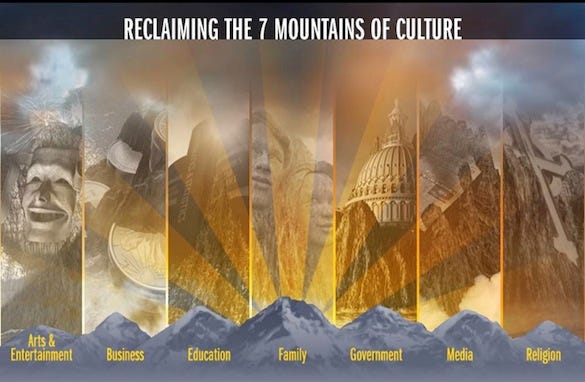
Christian Dominionists take all of this very literally. They will use violence to seize territory, school boards, and entire local and state governments if ever given half a chance to do so. They will take the book bannings, rewriting of history, witch hunts against teachers, and privatizating of public education as far as we allow them to go.
The situation is hopeless unless we focus on our productive power as education workers.
We are at the peak of the unification of our class. Disintegration through civil war, botched pandemic responses, economic crashes, and climate catastrophes has begun. Yet in the midst of this historical social crisis, the working class around the world is going into increasingly dangerous battles without an overarching strategy. We are at the point in time when steps towards a program and a pragmatic vision of revolutionary rupture becomes a necessary propelling force for the movements of our class. The alternative easily turns into the violence seen in Syria. Or to a paralyzing despair like in the DMV.
We will likely have to somehow build a revolution inside a civil war. That means we need a plan of attack that our unions and communities can mobilize around.
The Strategy
Our plan of attack must first and foremost involve taking over—and holding— the means of production as soon as a civil war scenario begins to unfold. For us this is the schools, libraries, museums, and archives. But not through nationalization, though nationalization is superior to private ownership. We must expropriate our workplaces and run them democratically with our communities—socialization. Our workplaces, and the necessary services they provide, will be a decisive site of struggle that we must capture to protect our communities.
The take-over and defense of the means of (re)production will mean the re-employment of everyone within essential sectors of the economy like agriculture, education, healthcare, energy, communications, or manufacture. That could allow an immediate reduction of the working day. If you’re an education worker, take a second to imagine a fully staffed building that is governed democratically.
We can play a key role in capturing and replacing the productive functions of the state and the market with a cooperative economy. Modern communication networks make this more feasible than ever before. Issues that concern the education systems of whole regions and continents can be deliberated upon by grass roots structures. Beyond that, we can help heal the open wound that is the division between urban and rural areas. Schools, libraries, museums, and archives are found across the many social and geographic contradictions within the US. Resources and consumer goods can be allocated rationally without worrying about money. Look at how things have gone with Wall Street running everything. Don’t you think we could do better?
Such a radical reduction of working time is necessary to develop the social capacity to tackle big problems:
- How do we (re)build war-torn areas? What gets rebuilt first?
- How do we deal with representatives of the old order of things who end up in the areas we control?
- How do we isolate the areas of the region that remain under government or militia control?
- How can we change the harmful ways we (re)produce our lives?
- How do we reconstruct rural communities devastated by factory closures and deaths of despair?
- How do we repair the harm from our previous (but involuntary) role in imperialist violence abroad?
This is a necessary transition period towards a society where we can transcend capitalism altogether. We will all engage in socially necessary work so that we can all work less.
The Protagonist
There is no class strategy without a protagonist, or protagonists. There are three main segments of the working class who will have to be the main driving force in a revolutionary transition:
- Tech and other intellectual workers, who embody necessary (re)productive knowledge, and who are facing a rapid erosion of their conditions.
- The essential ‘mass workers’ in the factories, warehouses, farms, mines, trucks, slaughterhouses, refineries, grocery stores, and other similar facilities, who embody productive power.
- The marginalized working class such as incarcerated workers, the unemployed, undocumented workers, the working poor, and working-class students—sometimes (and controversially) labeled the lumpenproletariat. They are often the first to take bold, revolutionary action against the state and its agents.
Education workers sit at the crossroads of all three. Schools, libraries, museums, and archives concentrate workers of all backgrounds inside the same buildings. Together, we transmit the (re)productive knowledge of intellectual workers through specific acts of labor that embody the productive power of mass workers. And everyday, we interact with an infinitely diverse set of communities spanning the globe.
Teachers across the US have shown a potential path forward by striking for ‘the common good’. Their organizing, both inside and outside official union structures, has been growing more inclusive of support staff, students, and wider communities. Education workers within the schools should do all they can to build or strengthen this sort of unity. Talk to your coworkers about solving your collective problems with collective action. Bond with your students, encourage their righteous anger. Get involved in the community and get to know the families you work with. Relationships between education workers, students, and families are rife with tensions. We must address them head on.
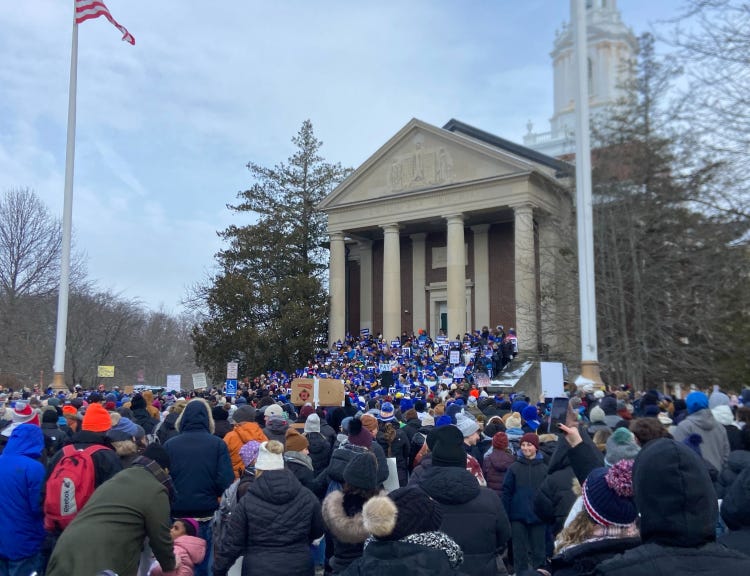
During the start of the pandemic we saw 400 strikes in the US alone, primarily of education workers and mass workers of the essential industries. Things accelerated in 2021, 2022, and 2023, and there’s no sign things are slowing down this year. These workers demonstrated collective power in strategic workplaces and broke through barriers separating instructional and support staff, but also ran up against the tendency towards narrow demands focused on contract negotiations and curated shop floor militancy. Even so, the Red for Ed movement and the successful defense against two-tier employment systems by workers organized under the Teamsters and UAW in 2023 are exciting developments.
The George Floyd Uprising was carried by a mass of working class people who didn’t act as a collective workforce. It was a mixture of students, the working poor, the precariously employed, and socially atomized segments of the class. There was a similar composition during the Arab Spring and the square occupations after the 2008 crisis. They possessed uncontrollable readiness to confront the state and inventiveness in the streets. If we plan to hold our ground in a coup or civil war scenario, we will need to be united with these heterogeneous forces.
The Need for Organization
What does all this mean for us as worker-organizers in education who want to build union power? We have to advance a program that strategizes in practical terms what the take-over of the means of production entails.
Teachers and port workers in Oakland offer an instructive experience. In 2022, their separate union locals allied to defeat a massive handoff to real estate developers that would fuel gentrification and school privatization. Eventually, they occupied an elementary school. It had been closed and slated for conversion to a charter school. From May to August, they operated the school as a community center, engaging in food distribution and neighborhood organizing. All while still offering classes to students.
In August 2022, the Oakland Unified School District (OUSD) hired private security to force the teachers, port workers, students, and community members out of the building. Video footage shows security agents hitting, shoving, and grappling with the occupiers. We can expect the level of repression in a coup or civil war scenario to be far higher. Even if it doesn’t happen in 2024. Education workers who consider themselves leftists should be making contacts with revolutionary groups engaged in training for armed community and self-defense. We must ask ourselves: how we can retain our full agency and avoid becoming victims?
Mexican educators in the city of Oaxaca offered a glimpse of an answer in 2006. In May of that year, teachers went on strike against low pay and low funding for rural schools, beginning with a common good demand at the center. On June 14, the Oaxaca state governor sent in 3,000 police to break the strikes and associated community protests.
The teachers and their community allies drove the police from the city. They then convened a coalition of unions, cooperatives, social organizations, community leaders, and parents to form the Popular Assembly of the Peoples of Oaxaca (APPO). Before long, nearly every city in the state had followed suit. For the next five months, the APPO built the foundations for a new society without the state or capitalism. In August, APPO militants took over the state’s various radio stations to broadcast their message widely across the state and country.
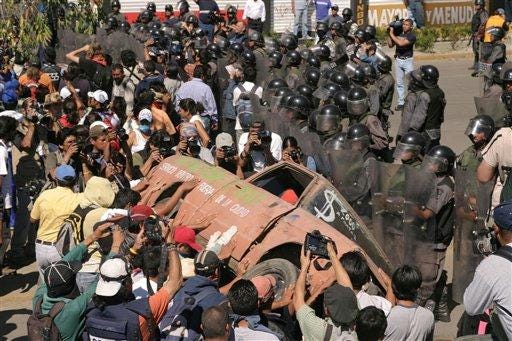
Unfortunately, Oaxaca’s revolution remained isolated. And while the Zapatista National Army of Liberation—which has maintained a liberated, indigenous controlled zone in the state of Chiapas since 1994—gave strong vocal support and took local action, the movements were unable to link up. In October, thousands of federal troops stormed into Oaxaca state and effectively crushed the revolution.
Without spreading our organizational efforts far and wide, we are doomed to defeat. Our unions must to be internationally connected so we can build the global solidarity necessary to overwhelm the ruling order’s attempts to repress our struggles.
We must bridge the gap between revolutionaries and rank-and-file workers. The National Confederation of Workers (CNT) in Spain, united with anarchist militants, did exactly this. Through armed community defense and robust labor organizing spanning decades, workers and peasants defeated Francisco Franco’s fascist coup across much of Spain. It’s unlikely the Spanish Republic would have lived at all, otherwise. These same workers and peasants then, temporarily, built a new society based on confederal communist principles.
We probably have a lot less time to get ready, so we’d better work hard and fast.
While many education workers are employed in the private sector, most of us labor in the public sector. We must drive a wedge between public sector workers who engage in productive labor and the repressive state apparatus. And we have to make the difference clear.
Public sector workers include:
- Public and public charter school workers
- Sanitation workers
- NLRB workers
- Public defenders
- Public library workers
Enforcers employed in the repressive state apparatus include:
- Police
- Prison guards and workers
- Court workers
- Military personnel
- National guard members
The expropriation requires the dismantling of the repressive state force. Especially the prisons. Public sector workers are in a unique position to take actions that would wreck the machine of government repression. For example, if sanitation workers began burying all the police department buildings in a city’s garbage. Or workers in government departments launched work stoppages that can jam up the flow of money and other resources to the military and police. A coup regime will want to kill and lock up all its opponents. We have to act to make that impossible. Collective actions by incarcerated workers will be key. Armed defense of the means of production, too. It requires the expansion of the expropriation along the international supply-chain, through the spread of political hope for emancipation.
The DMV region again serves as a relevant case study. Two major airports connect the DMV with the entire nation and world. The non-profit and media industries are welded to the political apparatus of the US federal government. They are in large part extremely highly developed communications machines. On top of that, masses of government agencies requires a massive public sector logistics sector. Education workers could help package messages that could be transmitted globally by communication and transport workers. We could teach countless invaluable skills learned in our own struggles to others far away—or nearby but cut off from us by enemy forces.
Within the DMV, education workers could (re)mobilize to provide political and academic education. Our efforts could help end the division between manual and intellectual labor. We already occupy a blurred space between intellectual and manual labor as educators. Unleashed from servitude to administrators, school boards, and charter management organizations, we can reach our full potential. Every worker can learn any skill they want to learn from an excellent collective of education workers.
The closure of unnecessary industries and radical reduction of labor time will also be in the foreground. A strategy of insurgent expropriation of the means of production will have to be a product of collaboration between all three main segments of the working class.
We want to work less at full pay, according to the level that social productivity has reached. We want full staffing levels in our industries to end burnout culture forever. This can be a path of intervention for labor organizers who identify with the revolutionary politics of socialism, communism, or anarchism. We have to start a worker led inquiry that poses political questions to our co-workers:
- Do we need administrators, school boards, and superintendents?
- What would it take to keep our workplaces running if we took them over for ourselves and our students?
- What knowledge do we lack? What other workers here and abroad do we depend on?
- How would the state react?
This will only be possible if there are independent, rank and file structures or organizations within workplaces that are used to taking some form of direct action against their employers.
All this needs organization(s)—unions of all kinds—in the sense of a living strategy for the self-emancipation of the working class.
Social power doesn’t lie in the besieged government building, but in the productive fabric of society. In the current moment the fascist forces want to draw us into a culture war and armed confrontations—a type of struggle in which the working class can only lose. We have to re-group and re-root our work.
Closing Thoughts
What do you think? Am I overestimating the potential of a coup or civil war scenario in the United States? Or have I missed the mark in some other way? I welcome everyone’s critiques, especially ones from fellow educators. I am always looking to clarify my thoughts on this subject.
Please leave a comment to let me know your thoughts!
Whatever errors I’ve made, I do think it’s almost certain that any revolutionary project we’re involved in will happen at the exact same time as some sort of social collapse like a civil war. Even now, breakthrough union wins are accompanied by news of open neo nazi rallies and other fascist groups preparing for war.
1 Goldstein, Dana. 2014. The Teacher Wars: The History of America’s Most Embattled Profession. First Edition. New York: Anchor Books.
2 Stanley, William Deane. 1996. The Protection Racket State : Elite Politics, Military Extortion, and Civil War in El Salvador. Philadelphia : Temple University Press. http://archive.org/details/protectionracket0000stan.
3 German, Michael. 2020. “Hidden in Plain Sight: Racism, White Supremacy, and Far-Right Militancy in Law Enforcement,” August. https://www.brennancenter.org/our-work/research-reports/hidden-plain-sight-racism-white-supremacy-and-far-right-militancy-law.
Who are the Angry Education Workers?
This is a project to gather a community of revolutionary education workers who want a new society. We want to build contacts between education workers around the world. The goal is to become a platform for educators of all backgrounds and job roles to share worker-centered inquiries (of any artistic medium) into the education industry under capitalism. We can then workshop and boost each others' work. Doing this, we can help each other figure out how to intervene effectively to build worker power in our local contexts and make education a truly public good. Join our discord community to get involved!
If you are a union, political collective, mutual aid network, or other organization, and want us to publish materials for you, please reach out!
